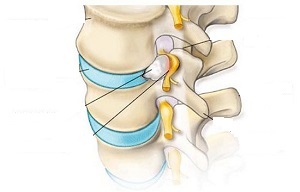Osteochondrosis is a disease of our time. Sedentary lifestyle, constant nervous tension do not pass without leaving a trace. Almost anyone can observe the symptoms of this disease. How to recognize an insidious disease and seek help in time?
Osteochondrosis is a physiological process that everyone acquires in their lifetime. The symptoms and treatment of cervical osteochondrosis are very diverse, which is why it becomes a disease only in certain conditions, in combination with certain factors. The disease is characterized by local changes in the bone tissue of the cervical spine due to the appearance of calcium deficiency. Calcium becomes scarce, and the tissue acquires a spongy structure, becomes brittle, fragile and carries the main function of the skeleton.
Symptoms of cervical osteochondrosis

Cervical osteochondrosis disrupts the blood supply to the brain. Therefore, almost all patients complain of similar symptoms:
- headache, dizziness, tinnitus;
- has pain in the shoulder, neck, chest;
- parts of the body tingle (hands, fingers);
- weakness in the arms and legs;
- psychological symptoms - unreasonable mood swings, irritability;
- In difficult situations, vision and hearing are reduced.
Symptoms are so varied and individual that it is difficult to identify cervical osteochondrosis based on patient complaints alone. The disease of the cervical spine is diagnosed with the help of MRI, computed tomography, X-ray. According to the results of the study, you can see changes in the spine. Only taking into account all the complaints, cervical osteochondrosis is diagnosed.
Depending on the location of the cervical osteochondrosis, the symptoms and treatment are slightly different. Where exactly did the change come from and how does it affect the central nervous system, osteochondrosis can be divided into three main groups. These varieties have different symptoms and different treatments.
- First group. The peripheral nervous system suffers. A change in the vertebrae directly affects the nerve endings (roots). Often called cervical osteochondrosis with radicular syndrome, it has the most striking symptoms:
- Pain from the cervical region to the shoulder area.
- Choking syndrome in the neck, tachycardia, heart pain.
- Crunching, noise, crackling when turning the neck. Find out what exercises to do to strengthen neck muscles with osteochondrosis.
- Constant back pain.
- Due to deterioration of blood circulation, hands fade, cold, fingers tingle.
- Joint pain.
- Second group. The whole spinal cord is involved, the disease manifests itself in the disruption of all its work. The symptoms are as follows:
- Muscle tone of the legs and arms decreases. Legs tingle, get tired quickly, it is difficult to walk, stand, the cause is a syndrome of semiconductor disorders. Blood does not flow well to the lateral columns of the spinal cord.
- Myelopathy develops in the affected areas. Affects limb dysfunction.
- Third group. The work of the brain is disrupted due to poor blood supply to the brain. It differs in characteristic syndromes:
- Hypothalamus. Syndrome that is indicated by a malfunction of the hypothalamus. This leads to neurological symptoms. The patient often feels unreasonable fatigue, irritability, mood swings. People suffering from this syndrome complain of poor sleep, resentment, unfounded fears, anxiety. Among the physiological changes: sweating, paleness, cold palms, high blood pressure.
- Drops syndrome. In such a disease of the cervical spine, they often faint for no reason. The cause is vasospasm.
- Vestibular trunk. The syndrome is characterized by frequent dizziness. The work of the vestibular apparatus is disturbed due to insufficient blood flow. Sometimes there is nausea, which provokes vomiting.
- Cochlear stem. Ringing, tinnitus is called this syndrome. Ear blockages or hearing damage may occur. It is very difficult to associate such symptoms with osteochondrosis of the cervical spine, especially to prescribe the right treatment.
- Pharyngeal-laryngeal. The syndrome is accompanied by discomfort in the throat. It may be difficult to swallow, the voice becomes hoarse. Painful symptoms such as dryness, itching, pain are observed in the throat.

Such osteochondrosis can cause torticollis
Characteristics of osteochondrosis with treatment of symptoms of radicular syndrome
Separately, it is worth focusing on the radicular syndrome of the cervical spine, whose symptoms need to be considered in more detail. Their manifestation is often confused with diseases that are not associated with osteochondrosis. The treatment does not work, the person continues to feel pain, the condition worsens. Misdiagnosis is sometimes worse than the disease itself. Prescribed therapy not only does not help, but also completely cripples healthy organs. The development of osteochondrosis of the cervical spine provokes the appearance of the so-called radicular syndrome.
The main cause is compression of the nerves, in particular their roots in a certain part of the spine (cervical, thoracic, spinal).
This cervical syndrome is characterized by:
- Pain when turning the neck or torso. It occurs after prolonged monotonous body position (sleep, prolonged sitting) and sharp turns of the head.
- Numbness and tingling in the occipital region.
- Headache in various manifestations: throbbing, sharp, short-term, long-term. This leads to dizziness, fainting, nausea.
- Chin muscles may relax a bit.
- With frequent pain, there is a decrease in the tone of the tongue and speech defects appear.
- The pain from the neck passes smoothly to the shoulder, forearm, arm. There is numbness of the fingers, discomfort when raising the hand, joint pain.
Often the radicular syndrome of the cervical vertebrae gradually turns into a thoracic one. In cervicothoracic osteochondrosis with radicular syndrome, acute pain is manifested in the internal organs.
Here the clinical picture looks like this:
- Pain in the shoulder blade, lower ribs, armpits. Numbness in these areas.
- Painful piercing sensations in the stomach, intestines, hypochondrium. Often observing this syndrome, they misdiagnose diseases of the digestive tract.
- Numbness, from the navel to the groin at the back of the spine, causing heaviness in the intestines and stomach.
- Dry throat.
Radical changes can cause a cardinal syndrome - a disorder in the bone tissue provokes irritation of the roots of the chest muscles or diaphragm. Its appearance is signaled by: heart pain of varying duration, from a sharp stab to prolonged pain, tachycardia, shortness of breath. These signs are exactly the same as the symptoms of angina pectoris. And if you treat it correctly, the result will be zero. In addition, in patients with this syndrome, the cardiogram is normal and there are no signs of heart disease other than pain. Therefore, drugs with a coronary dilating effect are not effective.
Treatment of cervical osteochondrosis
Effective treatment is a complex therapy that should be practiced not only during exacerbations.
Medicine

- Pain syndrome is relieved by analgesics and other painkillers.
- Anti-inflammatory drugs are prescribed for severe pain.
- Local anesthesia in the form of warming ointments and gels will be helpful.
- If there is a sharpened muscle spasm, take muscle relaxants.
- Prescribe drugs that improve cerebral circulation in cervical osteochondrosis.
- Blockade of painkillers is also used in medical practice.
- Prescribe anticonvulsants if necessary.
- In case of psychological disorders, antidepressants, sedatives, insomnia medications will be helpful.
In addition to drug treatment, the following have a very positive effect:
- massages,
- medical gymnastics;
- electrophoresis;
- with a bandage.
Cardinal methods of treatment - surgical removal of hernias and other defects of the spine.



































